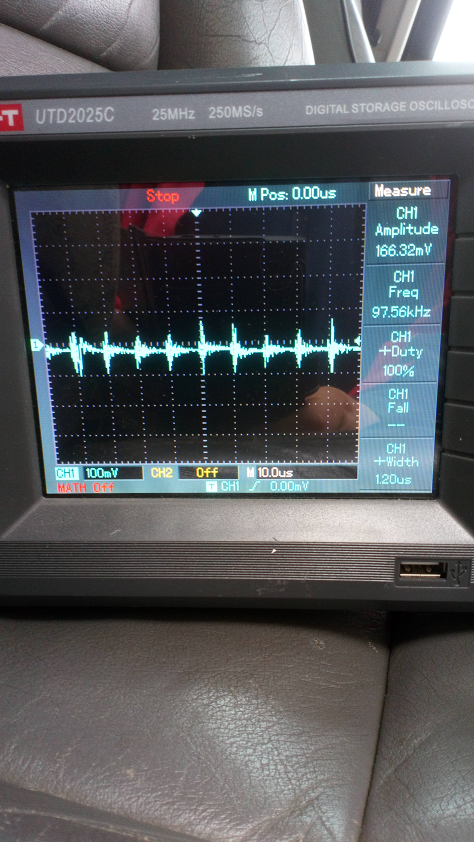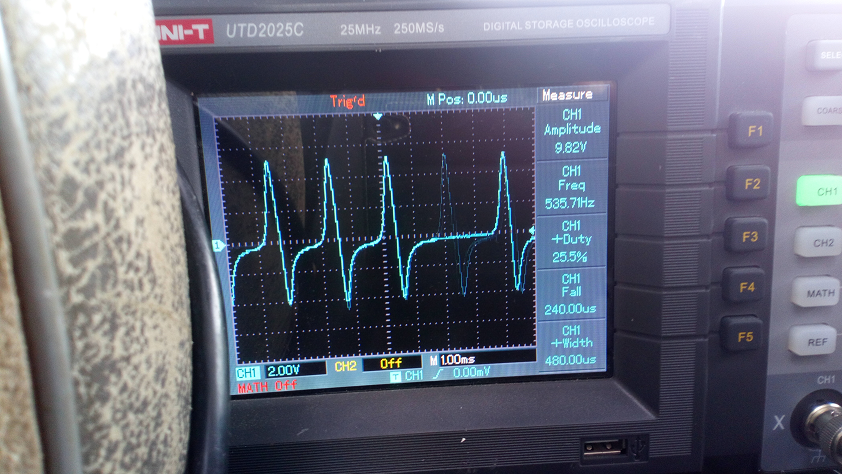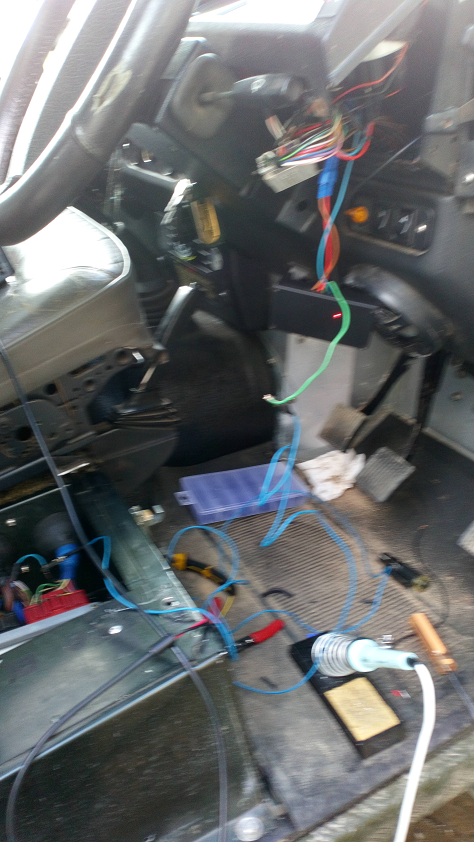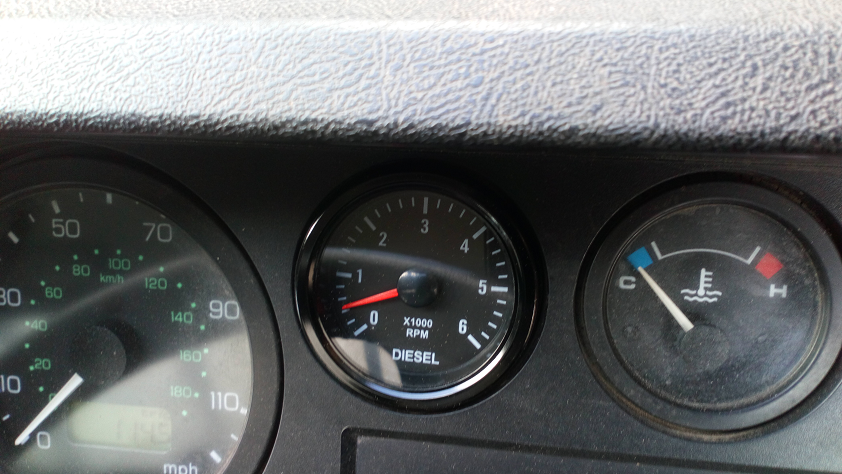...yes, that old wheeze.
I'm trying to reverse-engineer a tachometer into my dashboard.
I've read in various places online that pin 19 of the ECU gives out some sort of engine-speed signal, but I'm having no luck detecting it.

Here's the trace coming off pin 19, but I think it's just noise or some sort of RF rubbish coming out of the ECU.
All the wiring diagrams I've looked at suggest pin 19 of the ECU goes to the ABS system - my Defender doesn't have ABS, but the pin's obviously still available at the ECU end...it seems odd to me that the ABS would need to know the engine revs, though...
Can anybody tell me; is this pin-19 tacho thing actually true or is it just internet lies..?
Thanks
I'm trying to reverse-engineer a tachometer into my dashboard.
I've read in various places online that pin 19 of the ECU gives out some sort of engine-speed signal, but I'm having no luck detecting it.

Here's the trace coming off pin 19, but I think it's just noise or some sort of RF rubbish coming out of the ECU.
All the wiring diagrams I've looked at suggest pin 19 of the ECU goes to the ABS system - my Defender doesn't have ABS, but the pin's obviously still available at the ECU end...it seems odd to me that the ABS would need to know the engine revs, though...
Can anybody tell me; is this pin-19 tacho thing actually true or is it just internet lies..?
Thanks









